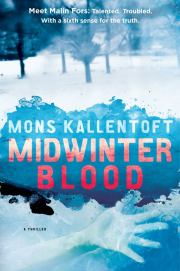The Good Lawyer by Thomas Benigno is an
exceeding good lawyer story. The best I’ve read in awhile and Benigno’s first.
Nick Mannino is both a good lawyer and a
good person seemingly against all odds. He
is a young, ambitious, naive public defender working in the South Bronx in
1982. Crime is on every corner. He still lives with his mother in
Brooklyn where he was raised by her and Nick’s now deceased step father. He drives a 1966 Chevy Malibu. Nick’s Uncle Rocco is second in command of
the local mafia. Uncle Rocco was always
there for him as a young lad but Nick’s professional and personal ethics had
caused him to avoid his uncle as an adult. Ironically Nick has more in common
with Uncle Rocco than was ever revealed to him.
When in college Nick had met Eleanor, a bright young woman from a
wealthy aristocratic family in Atlanta who saw potential in Nick and paid his
way through law school. She also became
a lawyer and joined the Manhattan District Attorney’s office only to be close
to Nick. Nick feels inferior to Eleanor and
withholds his uncle’s identity from her.
The story unfolds as Nick is called to defend
the worst kind of client, a child molester.
Peter Guevara is working as a
teachers aid when three young boys from his school accuse Peter of sodomy. Peter’s kind manner and broad level of
support from coworkers and friends leads Nick to believe in Peter’s innocence. Two of Peter’s accusers decide to recant
their statements against Peter and the third charge is dismissed after Peter
makes a glowing testimony to the grand jury.
Only hours before, the diabolical Peter had confessed to those crimes
and more in a lie detector test that Nick had ordered. Nick was given the results only after the
grand jury had dismissed all charges.
Now bound by client attorney privilege, Nick is distraught over how he
was manipulated by Peter. Determined to
legally put an end to Peter’s evil doings, Nick uncovers several more crimes including
rape and murder that were committed by Peter some dating back to the 1950’s. So
Nick is caught in an ethical dilemma as a public defender unable to reveal his
client’s many heinous crimes at the same time fearing retaliation from Peter. Frustrated he can’t stop this serial killer
and rapist alone or legally, Nick solicits help from Uncle Rocco. Now Nick faces a moral dilemma, all the
result of just trying to be a good lawyer and a good person.
I have revealed only a broad outline of the
plot. Benigno’s mastery comes through in
introducing and developing character after character and weaving them into a
complex and totally believable story
that connects them all together in the end.
Seemingly incidental subplots some from years earlier tie back to the
main plot in surprising yet meaningful ways.
Some are easily guessed, others catch you by total surprise. I love it when an author can do that. The setting too is inspiring and nostalgic …a
flash back to simpler times with no cell phones, internet, or cable news. Human connections with friends, neighbors, colleagues,
and family were somehow more important than today… plus Nick drove a 1966 Chevy
Malibu… awesome. I hope we hear more
from Thomas Benigno.










